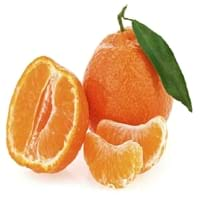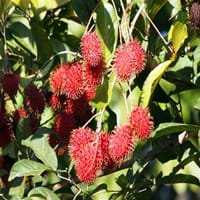Health Benefits
Cancer prevention, Heart care, Increases metabolic rate, Reduces stress
Anti-oxidant properties, Boosts immune system, Skin rejuvenation, Strengthening of bones
General Benefits
Boosts immune system, Controls blood pressure, Digestive aid, Eye care, Helps in weight loss
Antiseptic properties, Cures headache, Removes waste from kidney
Skin Benefits
Brightens and lightens complexion, Treatment of acne, Treatment of dark spots
Hydrates skin
Hair Benefits
Promotes longer and healthier hair, Protects hair
Good conditioner
Allergy Symptoms
Abdominal pains, Breathing difficulty, Coughing, Diarrhea, Drop in blood pressure, Fainting, Runny nose, Skin rash, Sneezing, Swelling of mouth, tongue or lips, Vomiting
Chest pains, Rhinitis, Wheezing
Side Effects
Allergic reaction
Unknown
Best Time to Eat
As a snack in the late afternoon, Don't consume at night and before bed, Eat the fresh ones, avoid mixing with any other foods, don't eat after meal., Morning time (before lunch)
As a snack in the late afternoon, Don't consume at night and before bed, Eat the fresh ones, avoid mixing with any other foods, don't eat after meal., Morning time (before lunch)
Vitamin A (Retinol)
Not Available
Vitamin B5 (Pantothenic Acid)
Vitamin C (Ascorbic Acid)
Vitamin K (Phyllochinone)
Lutein+Zeaxanthin
Not Available
Phytosterol
Not Available
Calories in Fresh Fruit with Peel
Not Available
Calories in Fresh Fruit without Peel
Not Available
Calories in Frozen Form
Not Available
Calories in Dried Form
Not Available
Calories in Canned Form
Not Available
Calories in Jam
Not Available
Calories in Pie
Not Available
Type
Citrus
Tree fruit, Tropical
Season
Autumn
Early summer, Early winter, Late fall, Late spring
Varieties
Clemenules or Nules and Nadorcott
Rongrien, Chompu, Rapiah, Bingjai and Lebak Bulus
Color
Orange
Coral red, Yellow
Inside Color
Orange
Greyish-white
Taste
Sweet, Tangy, Tart
Sour, Sweet
Soil Type
Loam, Sandy, Well-drained
Clay, Loam
Climatic Conditions
Warm to hot climate
Humid
Facts about
- Clementine was first grown at the citrus research center in USA in 1909.
- It is called as"Christmas orange" as it's limited growing season falls during winter.
- It's a hybrid between Mediterranean and Oranges.
- Oils extracted from its seeds is used to make soaps and candles.
- 'Rambut' means hairy in Malay.
- It makes the best hair mask.
- Seeds are edible and healthy too.
Top Producer
Spain
Thailand
Other Countries
Argentina, Brazil, Egypt, Italy, Japan, Morocco, Turkey, United States of America
Africa, India, Indonesia, Malaysia, Philippines, Sri Lanka
Top Importer
United States of America
Singapore
Top Exporter
Spain
Thailand
Botanical Name
Citrus clementina
Nephelium lappaceum
Synonym
Not Available
Rambota
Subkingdom
Tracheobionta
Tracheobionta
Division
Magnoliophyta
Tracheophyta
Class
Magnoliopsida
Magnoliopsida
Order
Sapindales
Sapindales
Family
Rutaceae
Sapindaceae
Species
C. clementina
N. lappaceum
Generic Group
Citrus fruit
Not Available
Difference Between Clementine and Rambutan
We might think that Clementine and Rambutan are similar with respect to nutritional value and health benefits. But the nutrient content of both fruits is different. Clementine and Rambutan Facts such as their taste, shape, color, and size are also distinct. The difference between Clementine and Rambutan is explained here.
The amount of calories in 100 gm of fresh Clementine and Rambutan with peel is Not Available and 69.00 kcal and the amount of calories without peel is 47.00 kcal and Not Available respectively. Thus, Clementine and Rambutan belong to Low Calorie Fruits and High Calorie Fruits category.These fruits might or might not differ with respect to their scientific classification. The order of Clementine and Rambutan is Sapindales and Sapindales respectively. Clementine belongs to Rutaceae family and Rambutan belongs to Sapindaceae family. Clementine belongs to Citrus genus of C. clementina species and Rambutan belongs to Nephelium genus of N. lappaceum species. Beings plants, both fruits belong to Plantae Kingdom.









